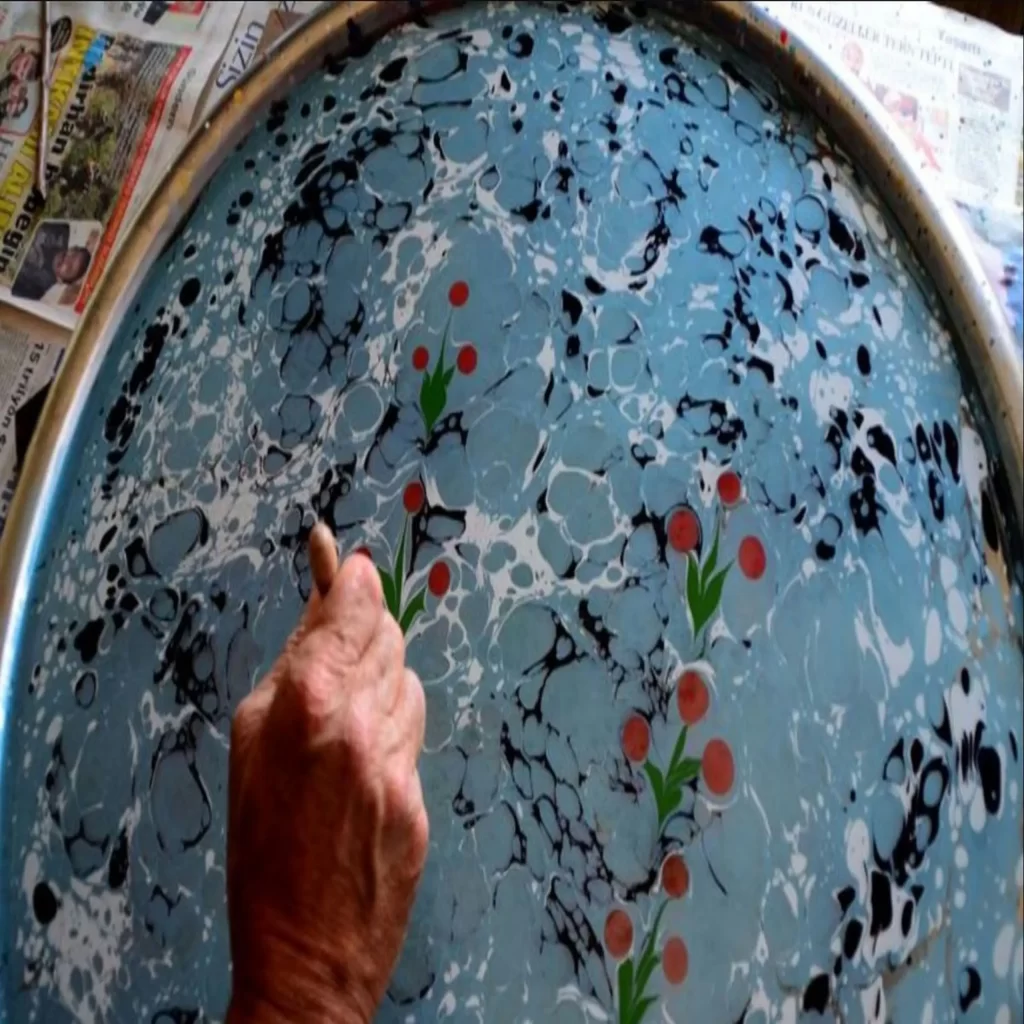
Ebru is one of the most important paper decoration arts… As in all Ottoman arts, it is an art learned by the master-apprentice method and affected by many variables outside the will of the artist.
Ebru; It is actually a harmony created by the dance of colors with water. Although some sources say that ebru comes from the word “Ab-ı ru” meaning face water, and some sources say that it comes from the Central Asian Languages “Ebre” meaning moire appearance, streaked fabric or paper in Chagatai, the most common belief is that the origin of the word is Persian; It comes from “Ebri“, which means cloudy, like a cloud. No matter how it is named, marbling, which is also a name for people, carries a mysterious harmony.
Marbling, which is a challenging and demanding art, is an irreversible, non-repetitive, multivariate art.
Although marbling is one of our traditional handicrafts, it was in danger of being forgotten until recently. It was started to be owned by various nations around the world, and companies producing materials used during marbling production appeared in some countries.
The late Mustafa Duzgunman, the leader of the last era in the art of marbling, played a great role in keeping one of our spiritual treasures standing, both with the students he trained and the understanding he brought to this art.
History

It is not known exactly when marbling, an important branch of Turkish handicraft, started. We come across Ebru on the side papers (the paper that connects the cover and the book) of very old manuscripts. However, since these books have been worn out for centuries and the bindings will be repaired again, these marbling papers in that book do not indicate that the book was made at the time of writing.
In that case, marbling papers containing a calligraphy sample can be considered a document in terms of showing the time, provided that the date is registered on it. The dates to be found on marbling papers called light marbling, which are made in light and pale colors especially for writing on, are important. That date may also be the date of making Ebru.
The oldest known marbling paper belongs to 1554. The history of Ebru is understood from the Arabic history of the island in italics written by Malik-i Deylemi in Georgia. The word Ebru means “Ebre” in Chagatai, “Ebrî” in Persian means cloudy, cloud-like, and later became Ebru with the vocal change in the language.
Like all our classical arts, we do not have a complete knowledge of the history of the art of marbling. Marbling paper is an art that lived as an assistant of calligraphy and a branch of bookbinding in ancient times. It was used to decorate the inside of the book cases, the leaves or the edges of the writing plates as borders.
Today, it has come to the fore again and is seen as renewed itself. In recent years, exhibitions have been held with varieties of matting and framed marbling like painting, and they are sold in framed or unframed shops. We see it printed on silk fabrics as ties hanging from our shirts as it decorates our homes and offices. Moreover, we see that by giving color to the tiles, it entered as an orator and flowered battal or wheel of fortune, adding to our eyes the marbling of the same color on the pillows.
The great Turkish writer Şemseddin Sami Bey says about marbling in his dictionary named Kâmûs-ı Türkî: paper) = (noun) colored paper used to make juz and notebook cases.”
It can be seen that the word has undergone some changes over time, both according to the information given by the writer of Kâmûs-ı Türkî, Şemseddin Sami Bey, and the information given by Sadık Efendi, who learned this art in Bukhara. This word, originally from Chagatai, turned into “ebri” while passing through Iran during the migration to Anatolia, and into “ebru” in our country due to the similarity of the word.











